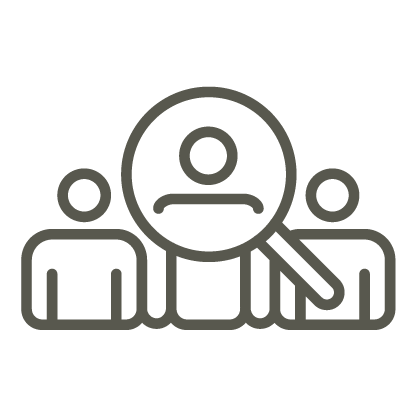Many firms are now embracing Diversity, Equity, Inclusion and Belonging (DEIB) as a fundamental aspect of their business strategy and recognise the significance of DEIB in shaping decision-making processes across various business functions, such as people management, operations, supply chain and procurement. But what does good DEIB look like and how can we measure its effectiveness?
This was the theme for the latest Brighter Thinking Roundtable, hosted jointly by Menzies LLP and the Chartered Institute of Credit Management (CICM) at the Millennium Stadium in Cardiff. Senior-level executives from ten organisations attended the event to share their experiences of DEIB and its significance to their businesses.
DEIB in the workplace have emerged as crucial components for business success, not just ethically but also financially. The roundtable discussion raised a number of issues; from concerns about decreasing diversity scores, to the importance of cultural sensitivity, neurodiversity, and the impact of workplace culture on Artificial Intelligence (AI) adoption. One significant conclusion, however, was that the DEIB agenda could be promoted and developed without damaging profit.
FOSTERING DIVERSITY
A recurring concern among speakers was the lack of diversity in their businesses, with one individual noting a decline in their company’s diversity score since the last assessment in March. Diversity encompasses various aspects such as race, gender, disability and more, and their predominantly British and white senior management team raised questions about representation at the senior level.
Annual reports from the business emphasised the impact of diversity on business outcomes and strategies. Specific groups, like employees aged 20-25 with low satisfaction scores, called for improved communication on DEIB. Across the firms in attendance, all agreed that the importance of DEIB is significant in attracting and retaining the younger generation.
CREATING INCLUSIVE PRACTICES
The group agreed that sustainable practices are likely to attract diverse talent and foster an inclusive environment. Simple changes included avoiding alcoholic drinks in team photos or organising more inclusive activities and events that do not involve alcohol at all. This all contributes to a more inclusive environment.
The recruitment process plays a pivotal role in fostering diversity. Cultural relevance and fit are crucial factors. A unique suggestion from one attendee involved expanding offices to reach different cultures; a strategy that extends far beyond traditional recruitment methods but one that may be significantly more effective in improving inclusion. It is also imperative that businesses are tailoring job descriptions to attract diverse candidates, including those with neurodiverse conditions.
NEURODIVERSITY IN THE WORKPLACE
Project SEARCH, an internship programme for individuals with neurodiverse conditions, was discussed as a great example of a project that enables inclusivity. Project SEARCH aims to support 10,000 young adults with a learning disability, or autism spectrum condition, or both, in the UK into paid employment by 2030. The charity has supported almost 2,000 people into paid employment to date. A great initiative to ensure inclusivity is being fostered throughout your organisation.
It was discussed that some businesses may consider working with neurodiverse individuals challenging as there is no one solution in providing accommodations; it all depends on the individual. That may seem daunting for some businesses but, give a neurodiverse person the remit and authority to change their environment to suit themselves and they can thrive. The long-term vision and sustainability of a business may rely on undiagnosed neurodiversity already. Making a home for difference will support the future.
EMPLOYEE RESOURCE GROUPS
Many speakers found employee resource groups to be effective in supporting people. These groups play a crucial role in creating a sense of belonging and fostering a supportive environment. They provide a collective voice, and it helps their voice to be heard. They need not be limited to protected characteristics. One business in attendance was considering an employee resource group for working parents.
With diversity bringing a variety of individuals to the table who have not been there previously, it was noted the journey for women’s equality is far from complete.
CULTURAL SENSITIVITY AND LIMITING UNCONSCIOUS BIAS
Cultural sensitivity was highlighted as a key element of DEIB. Asking about backgrounds and cultures in a non-judgmental way fosters inclusivity. The importance of hosting learning sessions, led by members of a particular community, was deemed a good way of facilitating a discussion.
Unconscious bias was also widely discussed – a term that describes the associations we hold outside of our control and conscious awareness. This affects everyone and is triggered by our brains automatically making assessments and quick judgements without consciously knowing we are doing so. Acknowledging and understanding the presence of unconscious biases, and reflecting on your own biases, is crucial in any firm’s diversity journey.
RESILIENCE, DEVELOPMENT AND WORK-LIFE BALANCE
Resilience was discussed in relation to discrimination against marginalised groups and individuals with disabilities. It is a skill only easily available to an individual with a certain level of resilience already. Expecting resilience from all colleagues is unreasonable. Just as important was allowing colleagues to be authentic. No one is obliged to declare disability or heritage, but their workplace should enable them to safely do so.
Work-life balance, flexibility, and open-mindedness were deemed crucial for employee well-being. The challenges of balancing work and childcare, especially for working parents, highlighted the need for businesses to provide support.
CULTURE, DIVERSITY AND TECHNOLOGY ADOPTION
The development of technology continues to support difference whilst providing an opportunity to discriminate. It needs to be implemented sensitively. It may mean that lower-paid roles in a business continue to be replaced by technology, but this is likely to decrease diversity.
Inclusive decision-making through the involvement of placement students and a shadow board of employees at the beginning of their career was suggested as a strategy to ensure diverse perspectives in decision-making processes.
CLIENT RELATIONSHIPS
While clients may not explicitly request diversity initiatives, they are fundamental for future business success. All agreed that building a workforce all clients can relate to will increase profitability in the long-term.
In summary, diversity and inclusion are not just moral imperatives but integral to the long-term success of any business. The points above underscore the need for businesses to adopt a holistic approach to DEIB, from recruitment and client relationships to neurodiversity and workplace culture. Striking a balance between diversity goals and business success is not only possible but essential for sustainable growth in a rapidly evolving global business landscape. Businesses must prioritise DEIB efforts, recognising that diversity is not a compromise but a catalyst for innovation and prosperity.







